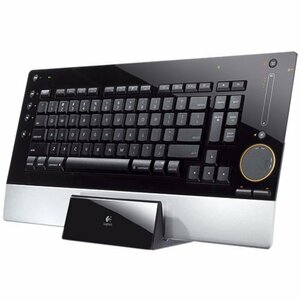Logitech Bluetooth 2.0 Edr Usb Adapter Driver For Mac

Wavlink Nano Wireless Bluetooth CSR 4.0 Dongle Adapter Bluetooth V4.0 USB Adapter CSR Chip Dongle Stick EDR USB 2.0 Dual-Mode Support Bluetooth Voice data/Music/Printer for laptop/Pad/Headser/BTMpblie. Compact USB adapter to add Bluetooth 2.0 ® wireless technology to your notebook or desktop computer; Bluetooth 2.0 EDR (Enhanced Data Rate) technology: up to 3 times higher data transfer rate then standard Bluetooth. The Belkin adapter wouldn't pair with my Apple Bluetooth keyboard. I tried the latest driver but it didn't help. It's going back to Amazon. If anyone knows of a reliable Mac compatible Bluetooth 2.0 + EDR module please let me know. This package supports the following driver models:ANYCOM Blue USB-UHE 200/250 ANYCOM Blue USB-200/250 Bluetooth dongle Formosa 4 Formosa 3 Formosa 2. Nov 25, 2015 Download drivers for Broadcom Bluetooth 2.0+EDR USB dongle Bluetooth device, or download DriverPack Solution software for automatic driver download and update Popular Drivers Broadcom BCM5716S NetXtreme II GigE Broadcom BCM2070 Bluetooth 3.0 USB Device Broadcom BCM2070 Bluetooth 3.0 USB Device Broadcom BCM2070 Bluetooth 3.0 USB Device.
The USBBT2EDR2 USB to Class 2 Bluetooth Adapter with EDR is a micro-sized adapter that adds Bluetooth capabilities to a computer through an available USB port, which enables you to connect to devices wirelessly, at ranges up to 10m (32ft) while consuming minimal power. Supporting the Bluetooth v2.1 specification along with Enhanced Data Rate (EDR), for transfer rates up to 3 Mbps, this adapter uses a small form factor design that makes it conveniently portable and unobtrusive when connected to a computer. Itunes 1 Cum instalez spell check pentru limba romn n word for mac. 1.1.3. 8 for mac.
Backed by a StarTech.com 2-year warranty and free lifetime technical support. Bluetooth Class Bluetooth classes define a Bluetooth device’s maximum power output; the higher a device’s output power, the longer the maximum range. The below table outlines the average power output and range of the four Bluetooth classes: Class Average power Average range 1 100 mW ~100m 2 2.5 mW ~10 m 3 1 mW ~1 m 4 0.5 mW ~0.5 m A device's maximum range can also depend on environmental factors, such as physical obstructions between the two Bluetooth devices. In order to achieve the maximum range defined by a Bluetooth class, both devices must support the same class. For example, if you wish to communicate at a 100m range, both Bluetooth devices will need to be class 1 devices.
If one of the devices is class 2, both devices will operate at the range of class 2. Bluetooth Profile Bluetooth profiles are additional protocols that that more clearly define the Bluetooth standard for very specific uses. Profiles define exactly how Bluetooth technology is used in specific situations. Some examples of Bluetooth profiles are Serial Port Profile (SPP), Human Interface Device (HID), Hands-Free Profile (HFP), and Headset Profile (HSP). To pair a Bluetooth device to your computer, complete the following: Note: These instructions require that your Bluetooth device's drivers are already installed, that the Bluetooth interface is enabled, and it is in Discovery mode.
For instructions on how to do so, refer to your Bluetooth device’s manual. Windows • Right-click the Start menu. • Click Control Panel. • Select Hardware and Sound. • Click Devices and Printers. • Click Add a device.
• Select your device from the list. • Click Next. Note: A pairing code may be required for your Bluetooth device. If this is the case, a pairing code request may appear on the screen. Make sure that this code matches the code on your device and click Yes.
You may also need to confirm this code on your device. Your device should now be paired to the computer. Mac OS X • Click the Apple logo. • Click System Preferences. • Click Bluetooth.
• Select your device from the list. • Click Pair. Note: A pairing code may be required for your Bluetooth device. If this is the case, a pairing code request may appear on the screen. Make sure that this code matches the code on your device and click Yes.
You may also need to confirm this code on your device. Your device should now be paired to the computer.